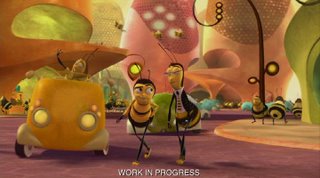Girls eat sterile men
Bees -- along with wasps, ants, ticks, mites -- have unfertilized eggs that develop into males. The discovery in 2003 of the complementary sex determination (CSD) gene helped explain the phenomenon. CSD has many versions, or alleles. Males inherit a single copy of the gene; females inherit two copies that are different. Bees that inherit two identical copies of CSD would develop into sterile males if they weren't eaten by bees as larvae to save resources.
And guess what can happen through inbreeding? It increases the likelihood of producing sterile males. And then colonies may die.
Labels: bee society, genetics

